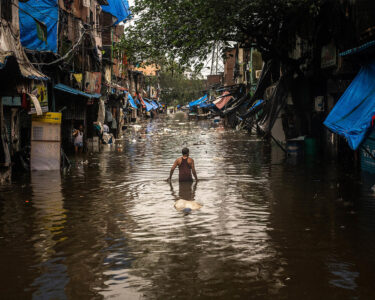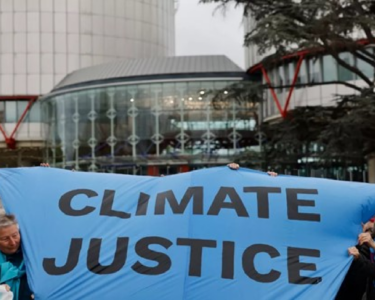Climate change is no longer a distant threat; it’s here, and its effects are already rippling through Pakistan’s agriculture sector. For a country where agriculture contributes nearly 24% to the GDP and employs around 42% of the labor force, this is not just an environmental issue—it’s an economic and social one. Pakistan’s agriculture is heavily dependent on the availability of water from glacier-fed rivers and the predictability of seasons.
With climate change, however, everything is shifting – sometimes subtly, other times catastrophically.
From erratic rainfall to soaring temperatures, the repercussions of climate change are being felt on farms across Pakistan, particularly by small-scale farmers who lack the resources to adapt.
Pakistan’s climate has always been extreme, but the rise in temperatures is now threatening to take it to dangerous new levels. Over the past decades, temperatures have increased steadily, leading to a significant impact on crop yields—particularly for heat-sensitive crops like wheat, rice, and cotton. Wheat, for instance, is highly vulnerable to heat stress, especially during the critical growth phases. This means that even a slight increase in temperature can drastically reduce wheat yields, pushing up food prices and threatening food security.
Rice, another staple crop in Pakistan, faces its own challenges with rising temperatures. High heat affects the delicate balance rice needs between water availability and temperature to grow optimally. With changing weather patterns, entire rice-producing regions are witnessing lower yields, which could have long-term repercussions on both domestic consumption and export revenues.
If heat stress wasn’t bad enough, rainfall patterns across Pakistan have become erratic, alternating between prolonged droughts and devastating floods. This unpredictability has made traditional farming practices nearly obsolete. Farmers who once relied on the monsoon season to water their crops are now seeing either too much or too little rain.
These extremes disrupt planting schedules and damage crops, leading to significant agricultural losses. Floods, in particular, cause widespread destruction, washing away topsoil, eroding farmland, and reducing productivity. On the other hand, prolonged droughts severely impact water availability, leaving fields parched and unproductive.
It is said that “In the end, we will conserve only what we love, we will love only what we understand, and we will understand only what we are taught,” a powerful quote from Senegalese environmentalist Baba Dioum. This highlights the urgency for Pakistan’s farming communities to be educated about and equipped for these new challenges.
The melting of glaciers in the northern regions of Pakistan is perhaps one of the most alarming consequences of climate change. Pakistan relies on these glaciers as a primary source of water for its rivers and irrigation systems. However, rising global temperatures are accelerating glacier melt, leading to short-term flooding and long-term water shortages.
Without a stable and sustainable water supply, Pakistan’s agriculture sector faces an uncertain future. Irrigation networks, already strained by population growth and mismanagement, will struggle even more to meet the water demands of farmers. For a country whose food production depends so heavily on water, this is a ticking time bomb.
Heatwaves, cold spells, cyclones—these once-rare occurrences are becoming more frequent and severe, disrupting the agricultural calendar and reducing yields. In recent years, Pakistan has experienced a surge in extreme weather events, and each one comes with its own set of problems. Heatwaves scorch crops and livestock, while sudden cold snaps damage fruit crops that thrive in warmer climates.
These weather extremes are wreaking havoc on the livestock industry as well. Rising temperatures and deteriorating pasture quality are affecting livestock health and productivity. Livestock, an essential part of Pakistan’s agricultural economy, suffers when grazing lands become barren, and water supplies run dry. This has far-reaching consequences, not just for food security but also for the millions of rural families who rely on livestock for their livelihoods.
The economic implications of climate change on agriculture are undeniable. As crop yields drop, food prices rise, leading to inflation and food insecurity. According to the Food and Agriculture Organization, Pakistan is among the countries most vulnerable to climate change-induced food insecurity. This is a frightening prospect for a nation already grappling with poverty and social inequalities.
In rural areas, where agriculture is the backbone of the economy, the effects of climate change are even more pronounced. Millions of people depend on farming for their income, and as climate change intensifies, many are being pushed into poverty. The possibility of climate-induced migration is becoming a reality for many farmers who, after losing their crops and livestock, are forced to leave their land in search of work in cities.
While the situation may seem grim, Pakistan is not without options. Adaptation strategies are already being developed to help the agricultural sector cope with climate change. The adoption of climate-smart agriculture practices, such as crop diversification, improved irrigation techniques, and the use of climate-resilient crop varieties, is gaining momentum. These measures aim to make farming more sustainable and less vulnerable to climate extremes.
Water resource management is another crucial area. Enhancing water storage capacity and improving distribution systems can help mitigate the effects of irregular rainfall patterns. Early warning systems for extreme weather events are also being developed to provide timely alerts to farmers, giving them a better chance to protect their crops and livestock.
On the policy front, the government is beginning to recognize the need to support farmers in their adaptation efforts. Financial assistance programs and access to climate-smart technologies are being implemented to ease the burden on farmers. However, much more needs to be done to ensure that these policies reach the most vulnerable communities.
As American environmentalist Wendell Berry once said, “The earth is what we all have in common.” This sentiment rings especially true for Pakistan, where the effects of climate change transcend political, social, and economic divides. The future of the country’s agriculture—and the millions of people who depend on it—rests on our collective ability to address and mitigate the impacts of climate change.
Pakistan’s agricultural sector stands at a crossroads. Climate change is already taking a toll on crop yields, water resources, and the livelihoods of millions of people. But while the challenges are immense, there is still hope.
Time is of the essence. The clock is ticking, and as the famous proverb goes, “The best time to plant a tree was twenty years ago. The second-best time is now.” Pakistan must act swiftly to safeguard its agriculture sector from the ravages of climate change—before it’s too late.




